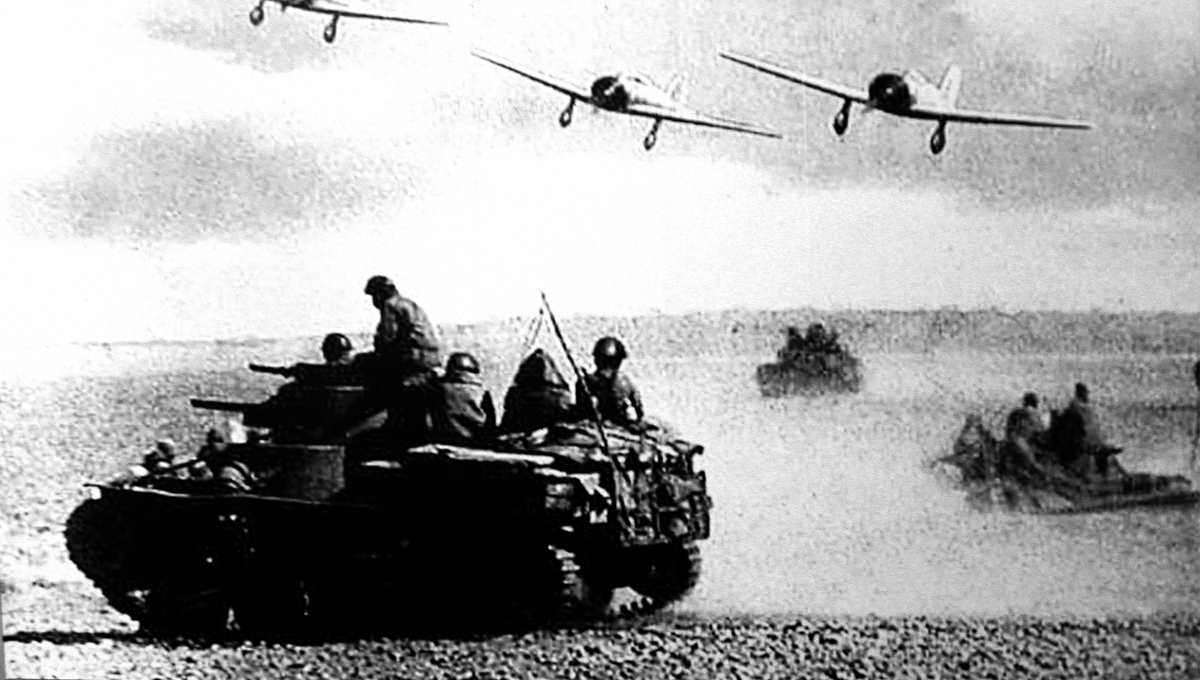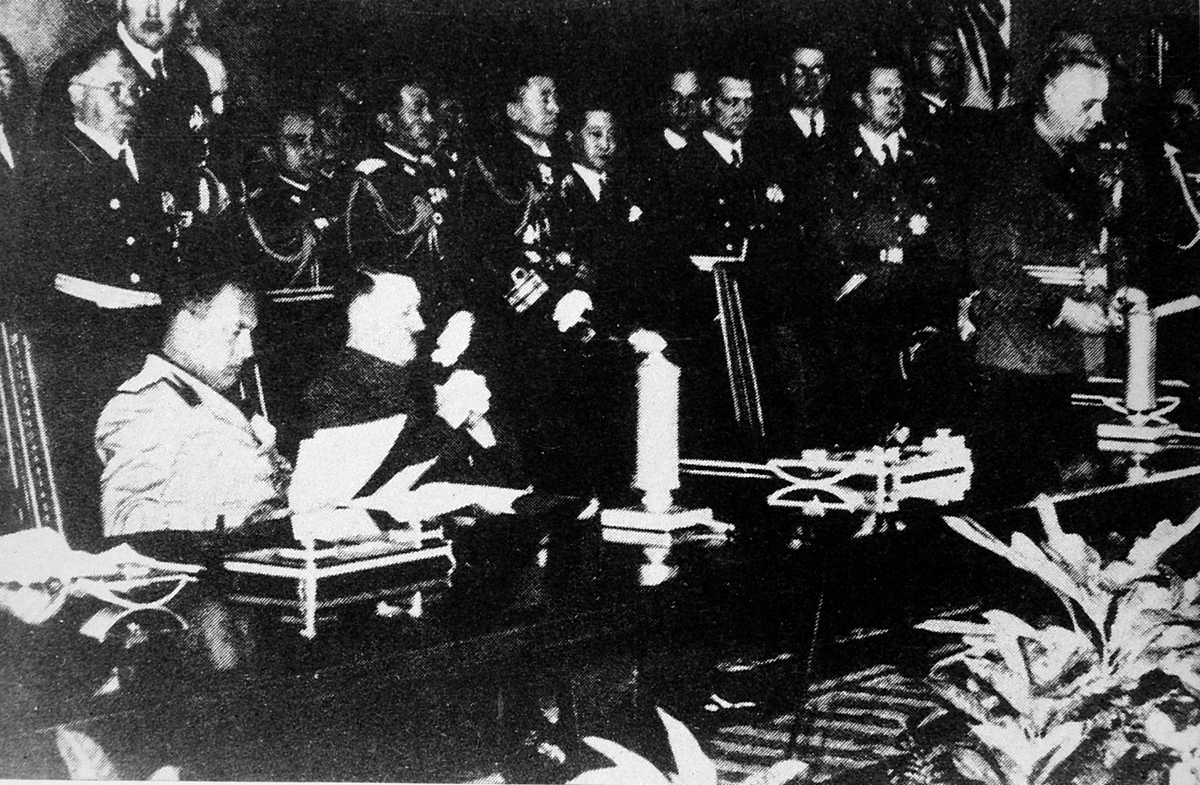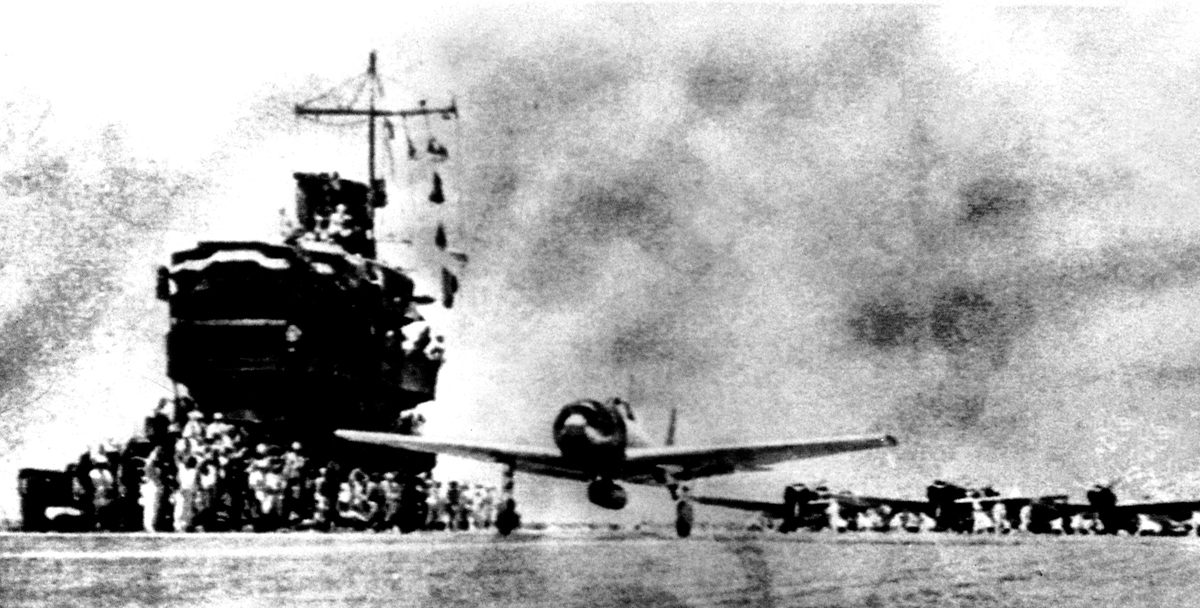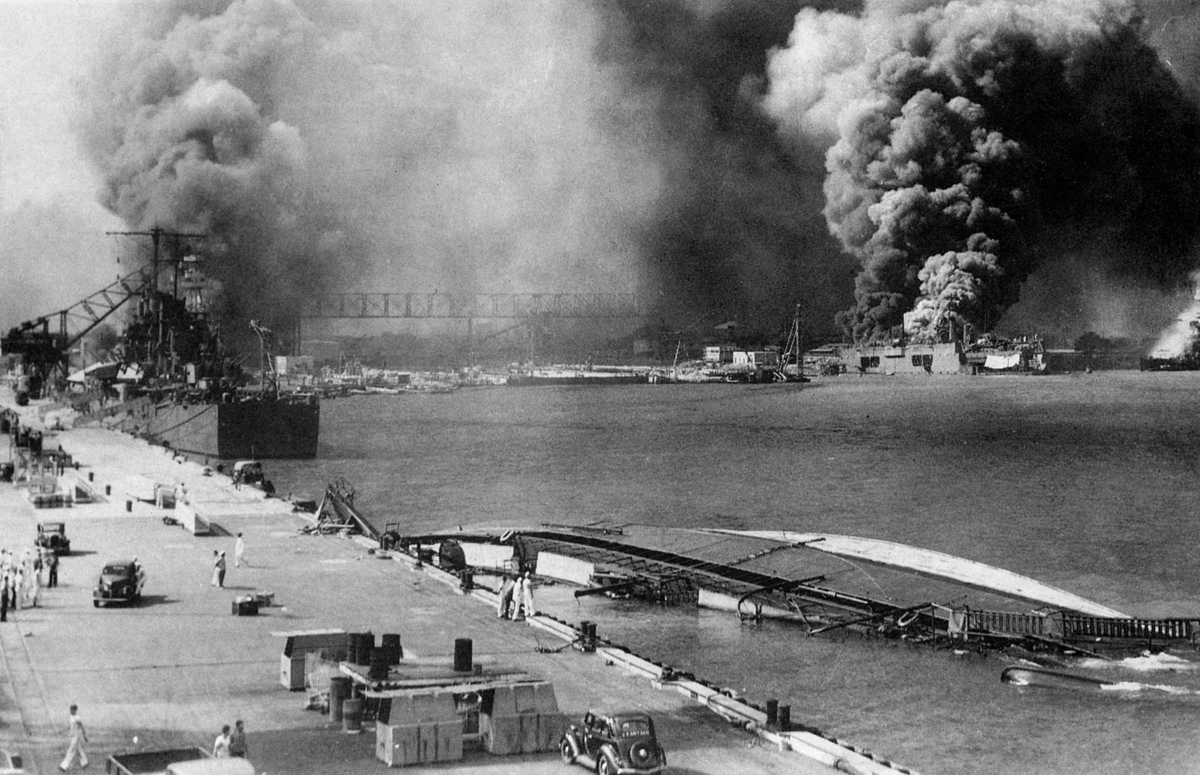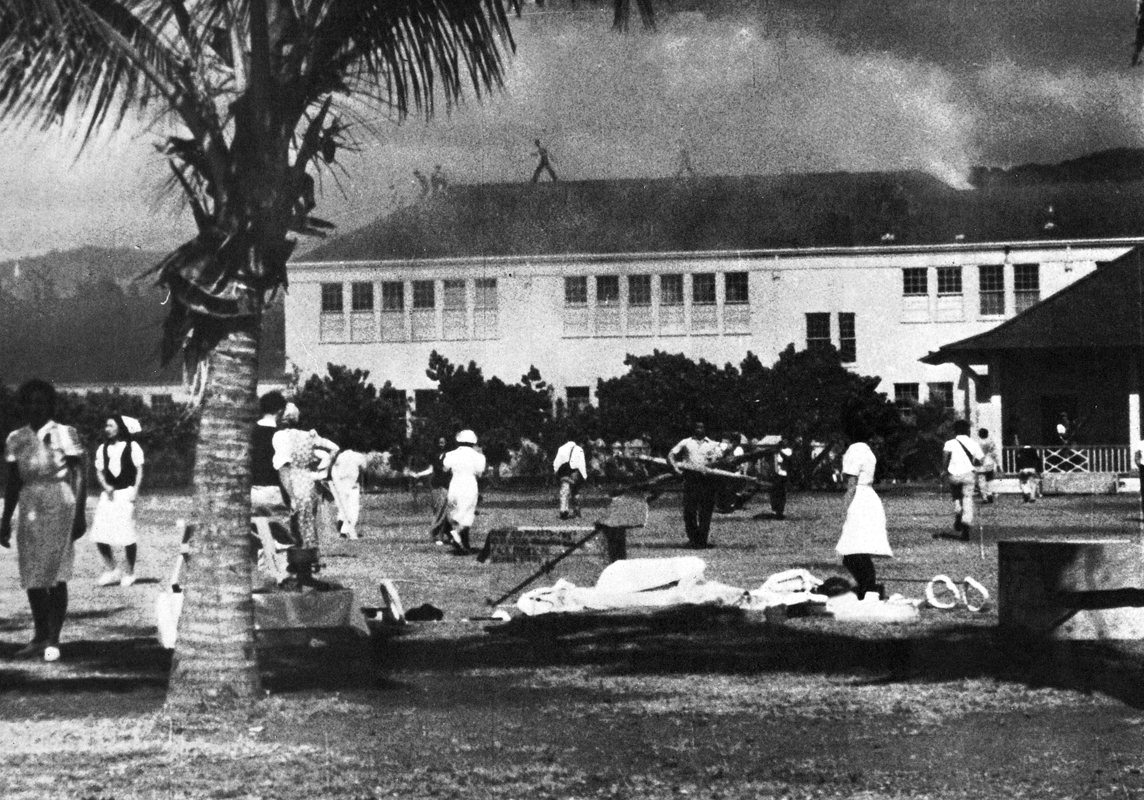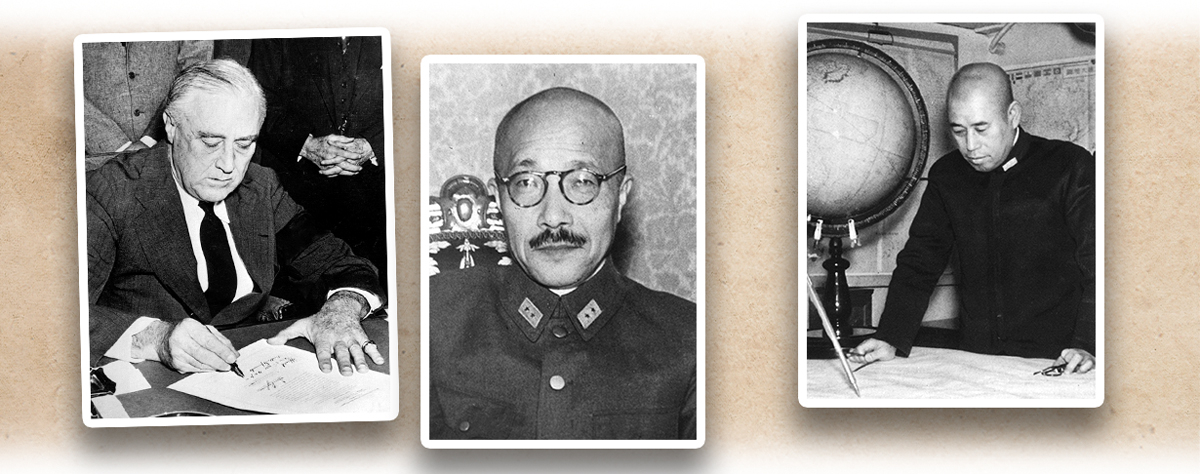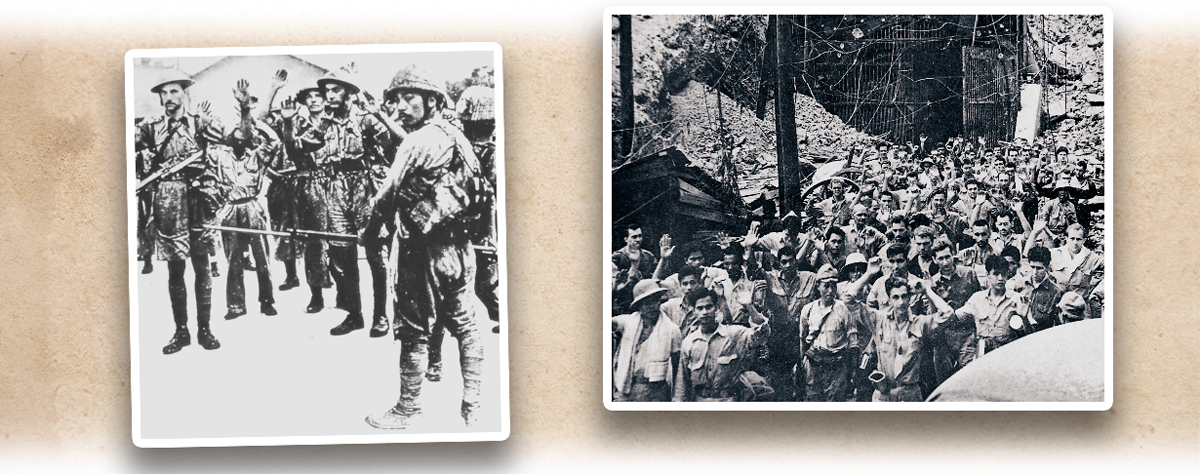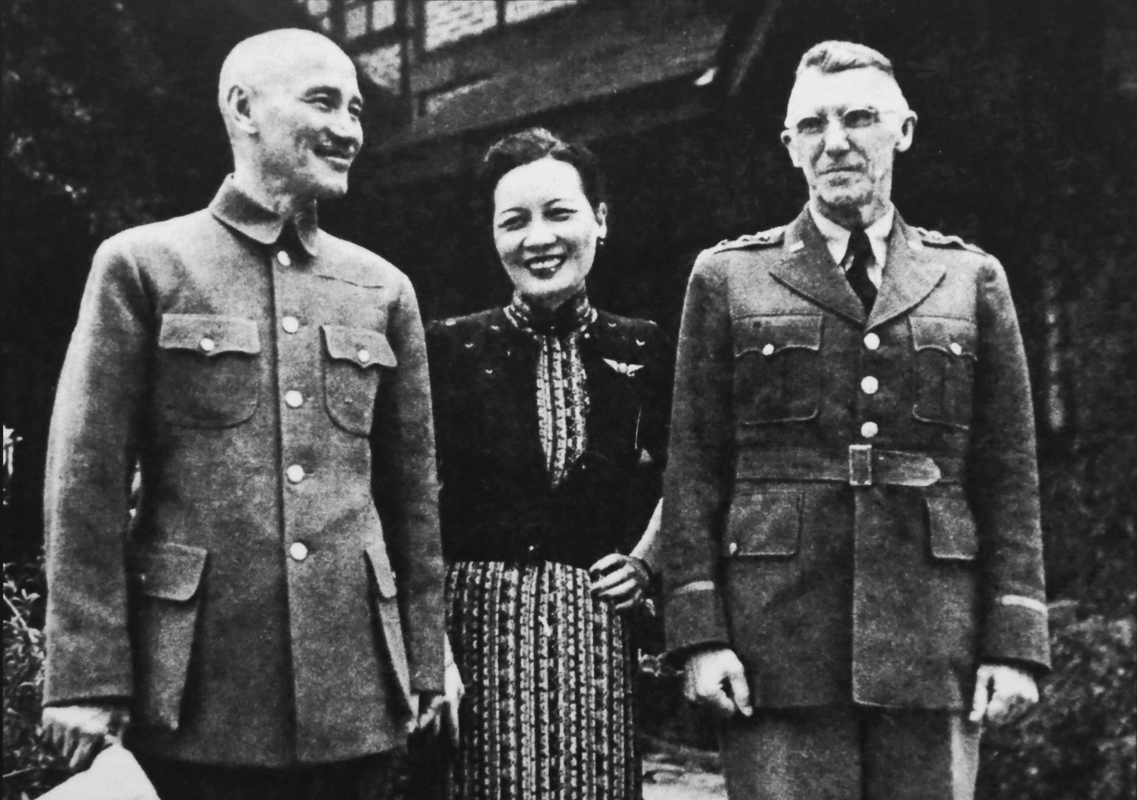After the two Battles of Changsha (長沙會戰), China gained a foothold in the resistance against Japan as the war reached a stalemate. Japan’s attack on Pearl Harbour at the end of 1941 ushered in a new phase of the Total War of Resistance Against Japanese Aggression when China started to counterattack. Japan had already captured more than half of the Chinese territory when it launched a surprise attack on the United States’ naval base at Pearl Harbour in Hawaii, during which over 10 American warships were sunk or destroyed, and more than 3,000 American casualties were inflicted. Soon Japan invaded the British colonies in the Far East, including Hong Kong, Malaya, Singapore, and Myanmar (then known as Burma), as well as Dutch Indonesia, and areas in the Philippines under American control.
The United States declared war on Japan one day after the Pearl Harbour attack. It marked the start of the Pacific War, a major theatre of World War II. China also formally declared war on Japan and joined the Allied powers alongside Britain, the Soviet Union, and the United States against the Axis powers (fascist regimes), namely, Germany, Japan, and Italy. On 5 January 1942, Chiang Kai-shek (蔣介石) became the Supreme Commander of Allied forces in the China War Zone (including Vietnam, Thailand, and Myanmar). In the second half of 1942, China negotiated with Britain, the United States, and other countries over the unequal Sino-foreign treaties signed during the 19th and early 20th centuries. Starting from 1943, new agreements were made to revoke the privileges gained by the imperialist powers under the unequal treaties.
|
|
How is China’s War of Resistance Against Japanese Aggression related to World War II, the Pacific War, and the World Anti-Fascist War? |
|
|
See answer below. |
The Soviet tanks striking the Japanese under the cover of fighter planes in the Nomonhan Incident broke out in 1939. The battle ended with a heavy defeat of Japan, altering its subsequent military strategies.
The Nomonhan Incident occurred from 11 May 1939 to 27 August 1939. Nomonhan stood on the border of the Soviet Union-controlled Outer Mongolia and the Japan-controlled Manchukuo. The main forces on the battlefield were the Soviet Red Army and the Japanese Kwantung Army. Led by Georgy Konstantinovich Zhukov, the Soviet army defeated the Japanese with its advanced armoury, artillery pieces, and warplanes. The two sides agreed a truce in September 1939. The Nomonhan Incident changed the course of the war in the following ways:
1. Japan realised that it was no match for the Soviet Union and thus abandoned plans to expand northward. Instead, it decided to move south to seize the Western colonies in East Asia and in turn the west Pacific. This decision eventually brought about the Pacific War.
2. The victory over Japan meant safety in the east for the Soviet Union and that it did not have to fight a war on two fronts. After the outbreak of the Soviet-German War in June 1941, the Soviet Union was able to mobilise large forces against Germany. Georgy Konstantinovich Zhukov who led the fight at Nomonhan played a decisive role in the Soviet victory over Nazi Germany.
On 27 September 1940, Germany, Italy, and Japan became allies by signing the Berlin Pact. The Rome-Berlin-Tokyo Axis, also known as the Axis powers, came into being. In the photo, Adolf Hitler is seated in the front row, second from the left. At that time, Germany controlled most parts of western, northern, and central Europe, including Poland, Denmark, Norway, Belgium, the Netherlands, Luxembourg, and France. Having a strong ally like Germany, Japan made its foreign policies increasingly aggressive.
Setbacks at Nomonhan shifted Japan’s strategic focus to East Asia and the Pacific, which ultimately led to war with the United States. The photo shows the Japanese fleet and warplanes preparing for the Pearl Harbour attack in early December 1941.
On 8 December 1941 (7 December US time), the Japanese naval and air forces struck Pearl Harbour undeclared.
Caught off guard, the United States had over 10 warships and over 300 warplanes damaged or destroyed. The photo shows an American warship being hit and bursting into flames. Fortunately, no American aircraft carriers were in the harbour at the time.
Multiple explosions took place in Pearl Harbour. Apart from warships and warplanes, the harbour facilities were also severely damaged.
After the Pearl Harbour attack, local civil medical teams transformed schools into makeshift field hospitals. More than 3,000 Americans casualties were inflicted in the attack.
Left: the then United States President Franklin D. Roosevelt signing the Declaration of War on Japan the day after the Pearl Harbour attack. Middle: Tojo Hideki, the Prime Minister of Japan (18 October 1941-22 July 1944) who launched the Pacific War. Right: Yamamoto Isoroku, the Commander-in-Chief of the Combined Fleet cum mastermind of the Pearl Harbour attack.
Building on its successful attack at Pearl Harbour, the Japanese army launched a large-scale offensive against the Western colonies in the Far East. It took over Hong Kong, Malaya, Singapore, Indonesia, and the Philippines quickly. The west Pacific fell under Japanese control. Left: around 80,000 British troops surrendering to the Japanese in February 1942. Right: around 76,000 American and Filipino troops surrendering to the Japanese in April 1942.
A photo of Chiang Kai-shek, Soong Mei-ling (宋美齡 ), and General Joseph Warren Stilwell. The Allies were formed in the wake of the Pacific War to fight against the Axis powers. In January 1942, the Allies appointed Chiang the Supreme Commander and Joseph Warren Stilwell the Chief-of-Staff of the China War Zone, which included Vietnam, Thailand, and Myanmar.
With the United States entering the war, China formally declared war against the Axis powers on 9 December 1941. By then, it had been four and a half years since China’s Total War of Resistance Against Japanese Aggression started from 7 July 1937. Instead of declaring war on Japan, the Nationalist Government of the Republic of China only announced armed resistance when the Total War of Resistance broke out. It was generally believed that the Nationalist Government made this decision because it could not win the war alone and needed diplomatic leeway with Japan. After the United States was brought fully into the war due to the Pearl Harbour attack, the Nationalist Government was confident that the Axis powers could be defeated. A declaration of war would enhance China’s international standing during and after the war. Following the Pearl Harbour attack, Japan swept the west Pacific in half a year, during which it was in a neutrality agreement with the Soviet Union. The United States and Britain planned to defeat Germany in Europe first, so they relied on China to contain Japan. China thus became a key member of the Allies and its international status greatly improved.
|
|
How is China’s War of Resistance Against Japanese Aggression related to World War II, the Pacific War, and the World Anti-Fascist War? |
|
|
Most world history scholars deemed Germany’s invasion of Poland on 1 September 1939 the beginning of World War II (1939-45), although at that time the conflict was mainly for Britain and France against Germany. However, hostilities towards the Axis powers (fascist regimes) dated back further than that, which was manifested in China’s resistance against Japan and Ethiopia against Italy in 1935. Some believed that China’s War of Resistance Against Japanese Aggression started from the September 18th Incident in 1931. If so, China’s War of Resistance lasted 14 years. The widely accepted notions of “Eight Years’ Total War of Resistance” and the “Total War of Resistance” took the July 7th Incident (or Marco Polo Incident) as the outbreak of the war. The early stages of World War II, which was considered to begin in 1939, mainly involved Britain, France, and Germany only. The Soviet-German War started two years later in June 1941. The United States, a neutral state when Asia and Europe became war zones, did not declare war on Japan until the Pearl Harbour attack in December 1941, turning the Pacific War (1941-45) a part of World War II. The World Anti-Fascist War was basically a synonym for World War II, but opinions vary among countries. The Soviet Union saw Germany’s invasion of the Soviet Union in June 1941 as the start of the World Anti-Fascist War. Strife among Britain, France, and Germany before that point was seen by the Soviet Union as conflicts among imperialist powers. Chinese historians, however, maintained that China was engaged in the World Anti-Fascist War as early as 1937 with the start of the Total War of Resistance. |





